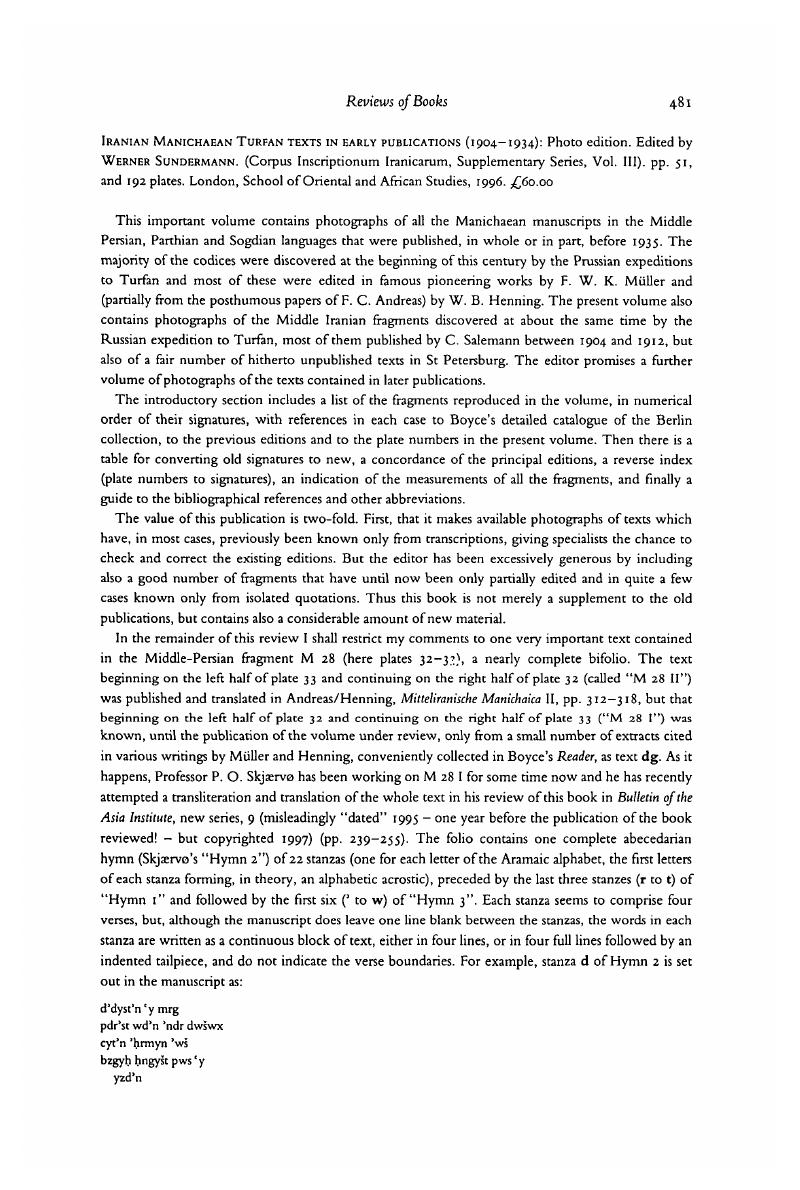Article contents
Iranian Manichaean Turfan texts in early publications (1904–1934): Photo edition. Edited by Werner Sundermann. (Corpus Inscriptionum Iranicarum, Supplementary Series, Vol. III), pp. 51, and 192 plates. London, School of Oriental and African Studies, 1996. £60.00
Published online by Cambridge University Press: 24 September 2009
Abstract

- Type
- Book Review
- Information
- Copyright
- Copyright © The Royal Asiatic Society 1998
References
1 This text shows that Middle Persian distinguished between bēzāar (or bīzār?), here written byc'r (cf. Ossetic bezar-, bedzar-, perhaps also Khotanese biysar-), “weary, disgusted, horrified”, on the one hand, and abēzār (Pahlavi 'pyz'l and 'pyc'l; cf. Armenian apizar), “free from, remote”, on the other; the two words coalesced in Neo-Persian bēzār. In the light of this, Bailey's, conclusions in the Henning Memorial Volume, London, 1970, pp. 20–22, require revision. In our passage the reiteration of the agentive suffic -um seems strange, but this is presumably poetic haplology for bēzār-um kird, ud šarmzad kird-um.Google Scholar
- 1
- Cited by


